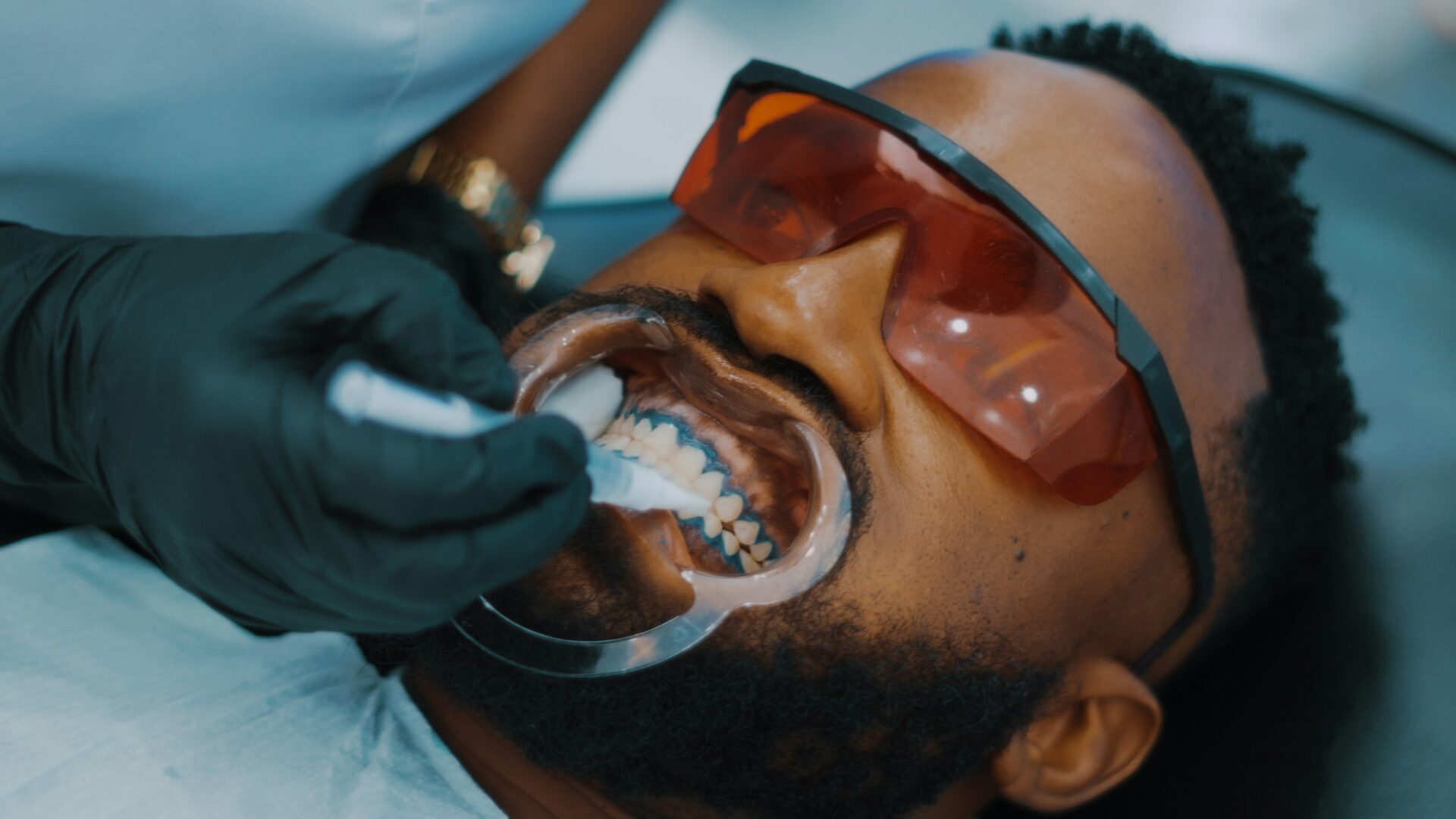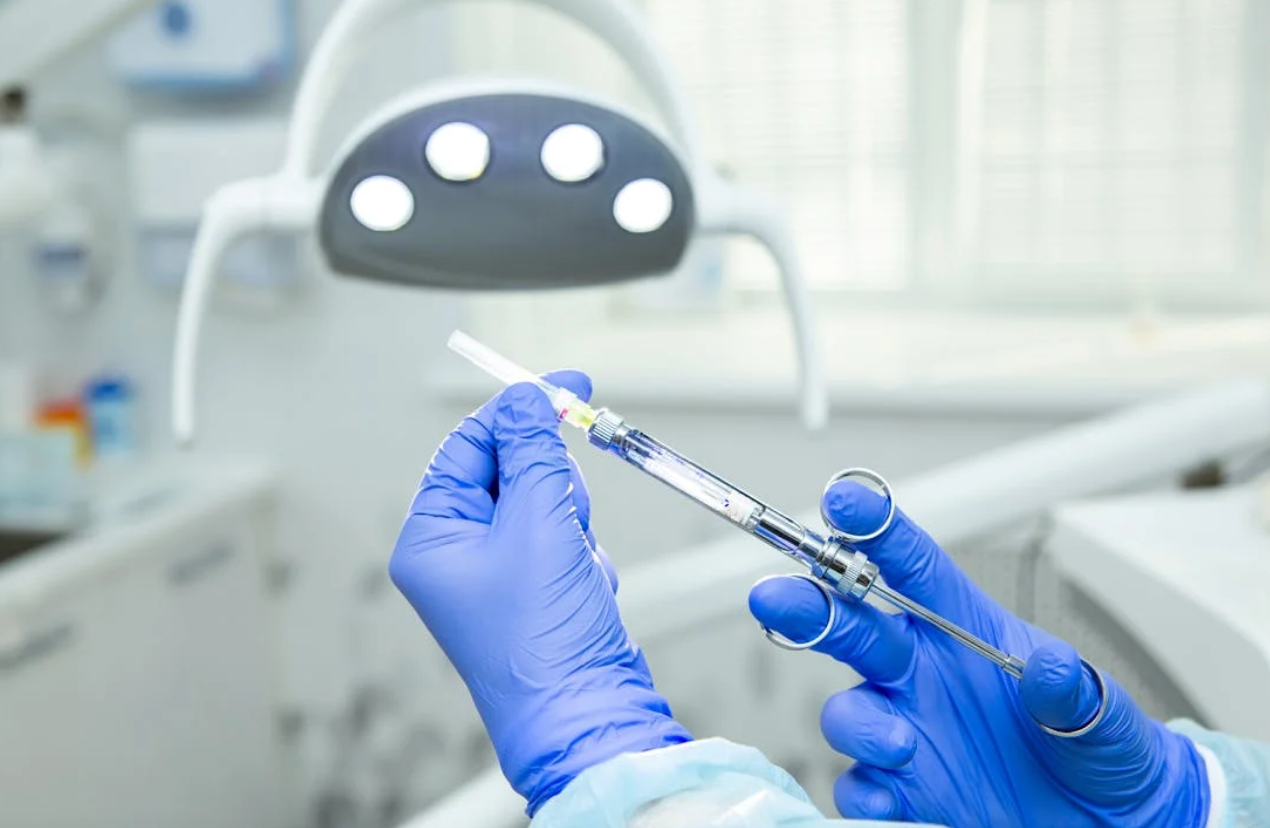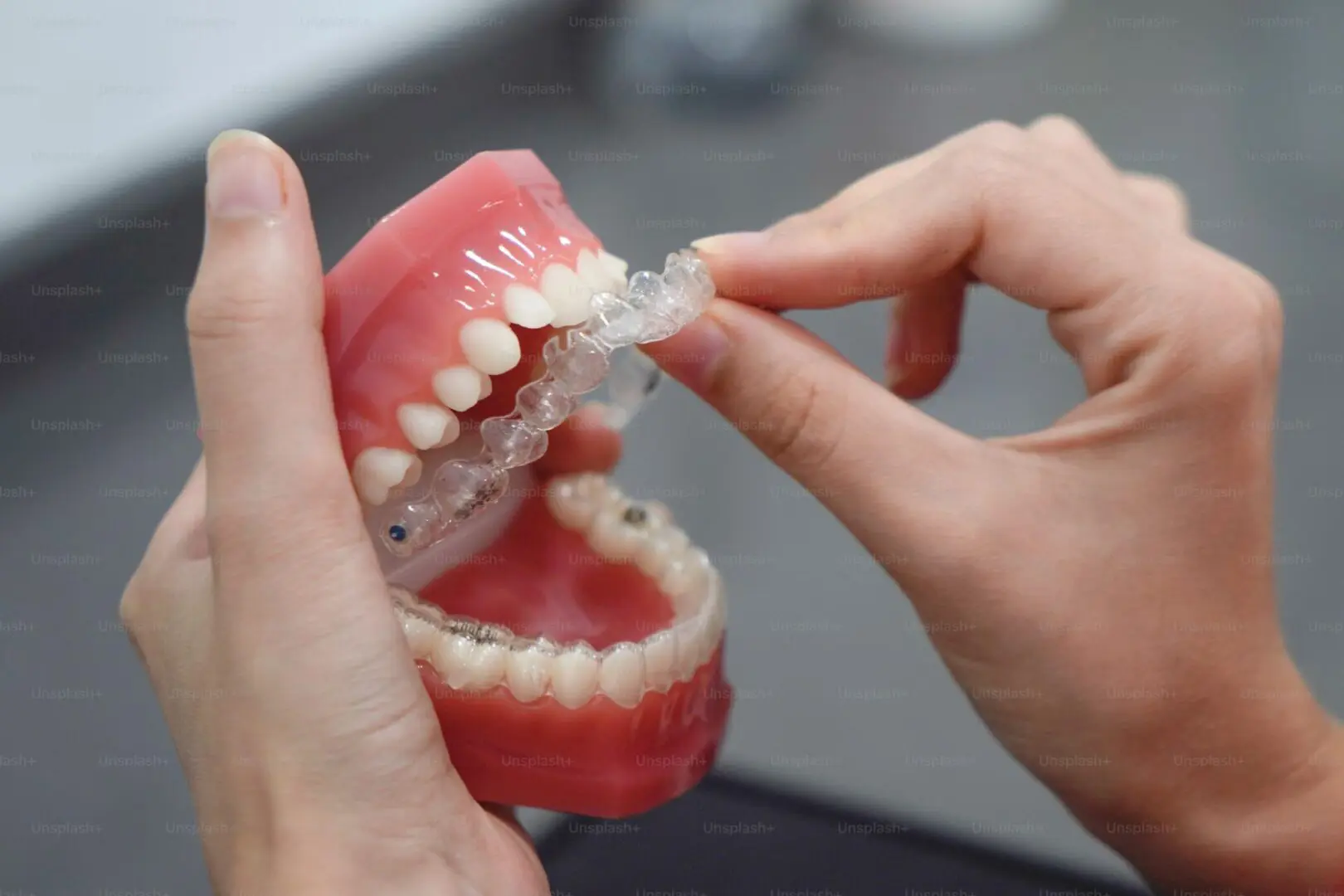Services
Comprehensive Oral Care

Preventative
Preventative care is a foundation of dentistry. The American Dental Association recommends visiting your dentist regularly – usually about twice yearly – for full cleanings, examinations, and consultations for potential treatment. Often, dentists are also capable of identifying potential problems that patients are not yet able to see or feel. When you maintain regular preventative dental appointments, you can stave off decay and gum disease, as well as identify the beginnings of oral health problems before they become severe.
A comprehensive dental exam will be performed by your dentist at your initial dental visit. At regular check-up exams, your dentist and hygienist will include the following:
Examination of diagnostic x-rays (radiographs): Essential for detection of decay, tumors, cysts, and bone loss. X-rays also help determine tooth and root positions.
Oral cancer screening: Check the face, neck, lips, tongue, throat, tissues, and gums for any signs of oral cancer.
Gum disease evaluation: Check the gums and bone around the teeth for any signs of periodontal disease.
Examination of tooth decay: All tooth surfaces will be checked for decay with special dental instruments.
Examination of existing restorations: Check current fillings, crowns, etc.
Dental radiographs (x-rays) are essential, preventative, diagnostic tools that provide valuable information not visible during a regular dental exam. Dentists and dental hygienists use this information to safely and accurately detect hidden dental abnormalities and complete an accurate treatment plan. Without x-rays, problem areas may go undetected.
Dental x-rays may reveal:
- Abscesses or cysts.
- Bone loss.
- Cancerous and non-cancerous tumors.
- Decay between the teeth.
- Developmental abnormalities.
- Poor tooth and root positions.
- Problems inside a tooth or below the gum line.
Detecting and treating dental problems at an early stage can save you time, money, unnecessary discomfort, and your teeth!
A dental prophylaxis is a cleaning procedure performed to thoroughly clean the teeth. Prophylaxis is an important dental treatment for halting the progression of periodontal disease and gingivitis.
Periodontal disease and gingivitis occur when bacteria from plaque colonize on the gingival (gum) tissue, either above or below the gum line. These bacteria colonies cause serious inflammation and irritation which in turn produce a chronic inflammatory response in the body.
As a result, the body begins to systematically destroy gum and bone tissue, making the teeth shift, become unstable, or completely fall out. The pockets between the gums and teeth become deeper and house more bacteria which may travel via the bloodstream and infect other parts of the body.
Here are some of the benefits of prophylaxis:
- Tartar removal – Tartar (calculus) and plaque buildup, both above and below the gum line, can cause serious periodontal problems if left untreated. Even using the best brushing and flossing homecare techniques, it can be impossible to remove debris, bacteria and deposits from gum pockets. The experienced eye of a dentist using specialized dental equipment is needed in order to spot and treat problems such as tartar and plaque buildup.
- Aesthetics – It’s hard to feel confident about a smile marred by yellowing, stained teeth. Prophylaxis can rid the teeth of unsightly stains and return the smile to its former glory.
- Fresher breath – Periodontal disease is often signified by persistent bad breath (halitosis). Bad breath is generally caused by a combination of rotting food particles below the gum line, possible gangrene stemming from gum infection, and periodontal problems. The removal of plaque, calculus and bacteria noticeably improves breath and alleviates irritation.
- Identification of health issues – Many health problems first present themselves to the dentist. Since prophylaxis involves a thorough examination of the entire oral cavity, the dentist is able to screen for oral cancer, evaluate the risk of periodontitis and often spot signs of medical problems like diabetes and kidney problems. Recommendations can also be provided for altering the home care regimen.
Scaling and Root Planing also known as conventional periodontal therapy, or deep cleaning, is a procedure involving removal of dental plaque and calculus (scaling or debridement) and then smoothing, or planing, of the (exposed) surfaces of the roots, removing cementum or dentine that is impregnated with calculus, toxins, or microorganisms, the etiologic agents that cause inflammation. This helps to establish a periodontium that is in remission of periodontal disease. Periodontal scalers and periodontal curettes are some of the tools involved.
Medication - Following scaling and root planning, an antibiotic or antimicrobial cream is often placed in the gum pockets. These creams promote fast and healthy healing in the pockets and help ease discomfort.
Fluoride is the most effective agent available to help prevent tooth decay. It is a mineral that is naturally present in varying amounts in almost all foods and water supplies. The benefits of fluoride have been well known for over 50 years and are supported by many health and professional organizations.
Fluoride works in two ways:
Topical fluoride strengthens the teeth once they have erupted by seeping into the outer surface of the tooth enamel, making the teeth more resistant to decay. We gain topical fluoride by using fluoride-containing dental products such as toothpaste, mouth rinses, and gels. Dentists and dental hygienists generally recommend that children have a professional application of fluoride twice a year during dental check-ups.
Systemic fluoride strengthens the teeth that have erupted as well as those that are developing under the gums. We gain systemic fluoride from most foods and our community water supplies. It is also available as a supplement in drop or gel form and can be prescribed by your dentist or physician.
Generally, fluoride drops are recommended for infants, and tablets are best suited for children up through the teen years. It is very important to monitor the amounts of fluoride a child ingests. If too much fluoride is consumed while the teeth are developing, a condition called fluorosis (white spots on the teeth) may result.
Although most people receive fluoride from food and water, sometimes it is not enough to help prevent decay. Your dentist or dental hygienist may recommend the use of home and/or professional fluoride treatments for the following reasons:
- Deep pits and fissures on the chewing surfaces of teeth.
- Exposed and sensitive root surfaces.
- Fair to poor oral hygiene habits.
- Frequent sugar and carbohydrate intake.
- Inadequate exposure to fluorides.
- Inadequate saliva flow due to medical conditions, medical treatments or medications.
- Recent history of dental decay.
Remember, fluoride alone will not prevent tooth decay! It is important to brush at least twice a day, floss regularly, eat balanced meals, reduce sugary snacks, and visit your dentist on a regular basis.
Endodontics
Endodontics is a specialty of dentistry recognized by the American Dental Association dealing with the treatment of the pulp and surrounding tissues of a tooth, commonly known as Root Canal Therapy (RCT).
FAQ
When you look at your tooth in the mirror, what you see is the crown. The rest of the tooth, the portion hidden beneath the gum line, is the root. The outer portion of the root is a hard tissue called dentin. The inside channel, or root canal, contains the pulp, a soft tissue consisting of blood vessels and nerves. Sometimes bacteria infect the pulp because of tooth decay, extensive tooth restorative history, periodontal disease, or a fracture and can cause inflammation, pain, and severe damage to the pulp. Root canal therapy involves removing the inflamed and/or infected pulp tissue by a process of cleaning and shaping the root canal. Then an inert material is placed in the canal to seal the tooth and prevent reinfection. After root canal treatment is done your restorative dentist will usually place a crown on your tooth to protect it against fracture.
When a root canal treatment fails, the first course of action that is usually taken is root canal re-treatment. The process is very similar to Root canal Treatment, the difference is that besides taking any remaining infected tissue out, the doctor has to take old filling material, any posts and crowns or any other obstacle in the pulp space out to be able to successfully disinfect and seal the area of the root canal. After the root canal re-treatment is done your restorative dentist will place a crown to protect the tooth against fractures.
Root Canal Treatment will take 1 to 2 appointments, depending on the complexity of the treatment and presence of infection, inflammation, or swelling. There are times when additional visits are necessary but this is rare. Treatment visits usually last one to two hours.
On completion of RCT, patient will be advised to see his General Dentist to restore the tooth to its original shape and size by placing a crown. Meanwhile, to prevent fracture, avoid eating on the treated tooth until it is restored. Your dentist will consult with you about what type of restoration is necessary to protect your tooth. Neglecting needed follow-up treatment could lead to failure of your root canal treatment and loss of your tooth.
Pain is only one indication for root canal treatment. Sometimes a diseased tooth can remain without pain due to the body’s immune system, leaving a patient unaware of what is happening inside the tooth. Your general dentist can often identify these situations and refer you to an endodontist for treatment before you experience pain and swelling.
Emergency Root Canal Treatment (Open and Medication)
An emergency RCT can be performed if you are in severe tooth pain and need to be treated as soon as possible. The doctor can perform a procedure which opens the tooth to remove the nerve and will try to finish the root canal procedure if that is not possible, then packs the tooth with medication to kill the infection. There will be a temporary filling put in the tooth when the treatment is finished. This procedure significantly reduces pain and starts the healing process. If needed an appointment will be made for you to return to finish the root canal.
Post-Operative Instructions
After Root Canal Treatment you will be able to go back to work, school, or to take care of your family. You will only be numb for a couple of hours. We wish to provide you with the utmost quality of care and extend every effort to satisfy you with every aspect of your treatment. If any problems should arise, please let us know how we can help. Here are the Post-Op instructions that will be given to you after your treatment.
- For the first few days and up to 10 days following your Root Canal Treatment, you may feel some mild pain, soreness, and sensitivity that can include throbbing and minor swelling while biting or chewing on your affected tooth. This can be especially pronounced if you had pain, swelling, and/or infection prior to your treatment.
- Take any medication that is prescribed for you according to instructions. (If antibiotics have been prescribed and you take birth control pills, consult with a pharmacist and/or physician.)
- Continue brushing and flossing as normal, being careful on the treated tooth as the temporary filling could dislodge.
- Usually a temporary filling has been placed on your tooth. DO not bite or chew with the tooth for one hour and while you are numb. Also, be very gentle with the tooth until the permanent restoration is placed. Try to chew on the opposite side. Do not eat anything sticky or chewy for the next few days. It is good to drink liquids right away. This will aid in hardening the temporary filling.
- It is very important to contact your General Dentist office as soon as possible (within 15 days) following your root canal treatment for the final restoration. Any unnecessary delay on placement of the final restoration may damage the tooth permanently and/or allow the tooth to become re-infected.
Call our office if you are in severe pain or experience swelling or if you have any questions
Oral Surgery
Oral Surgery is a form of dentistry that treats a wide spectrum of diseases, injuries, and defects around the head, neck, face, and jaw. Most common oral and maxillofacial services include extraction (moderate to difficult, including wisdom teeth), reconstructive dental oral surgery, and placing dental implants.

- Infection: Impacted wisdom teeth create an excellent environment for bacteria to thrive. Because wisdom teeth are so difficult to keep clean, bacteria tend to multiply around them and cause infections and cavities. The best time to remove wisdom teeth is in the teens to early twenties, before they begin causing these problems.
- Pericoronitis: Usually seen as gum inflammation over the lower wisdom teeth, it is the most common reason for their removal. Most of the times lower wisdom teeth are only partially erupted in the mouth and part of their coronal surface is covered by gums. Food tends to get easily caught around those areas causing pain and swelling. Thus, the lower wisdom teeth are removed in most cases to relieve the discomfort and to aid in better oral hygiene.
- Periodontal Disease: Also known as gum disease, periodontal disease is frequently seen around wisdom teeth. This is because they are difficult to clean given their position in the back of the mouth. Periodontal disease is a slowly progressive, chronic condition by which the bone supporting the tooth is lost. When present around a wisdom tooth, periodontal disease often affects the molar in front of the wisdom tooth. Additionally, the wisdom tooth can serve as a reservoir of bacteria that affect the rest of the mouth.
- Cysts: Although rare, cysts and benign tumors can form around impacted wisdom teeth. These lesions are similar to a water balloon surrounding the wisdom tooth. As they expand, they destroy the jaw bone and move other teeth.
- Crowding: Wisdom teeth may contribute to the crowding of front teeth, particularly the lower front teeth. Orthodontists frequently request their patients have wisdom teeth removed prior to taking off braces in order to facilitate orthodontic stability.
The doctor may determine that you need a tooth extraction for any number of reasons. Some teeth are extracted because they are severely decayed; others may have advanced periodontal disease, or have broken in a way that cannot be repaired. Other teeth may need removal because they are poorly positioned in the mouth (such as impacted teeth), or in preparation for orthodontic treatment.
Most people develop 32 teeth by the time they reach 18 years of age. However, the average mouth is only big enough for 28 teeth. The last 4 teeth to erupt are the wisdom teeth, usually coming in during the late teens and early twenties.
Wisdom teeth frequently become stuck as they try to erupt, remaining partially under the gum tissue. When a wisdom tooth fails to erupt normally it is termed “impacted.” Impacted wisdom teeth may cause problems in the future such as infection, pericoronitis, periodontal disease, cysts, and crowding.
A Dental Implant also called a fixture, is a medical device that interfaces with your jawbone to support a dental prosthesis, such as a bridge, crown, denture, or other facial prostheses. A dental implant is a preferred way of replacing a missing tooth since it’s a fixed, non-removable, and doesn’t involve trimming the adjoining teeth, unlike the traditional bridge prep. A dental implant can also be tooth retained or denture retained. It can be one-unit tooth or it can be used like a bridge replacing multi-unit teeth.
Orthodontics
Orthodontics is a specialized branch of dentistry focused on diagnosing, preventing, and treating dental and facial irregularities. Through the use of braces, aligners, and other appliances, orthodontic treatment aims to straighten teeth, improve bite alignment, and enhance overall facial aesthetics. The American Association of Orthodontists recommends that children receive an initial evaluation by age seven, as early intervention can often lead to simpler and more effective treatment options. By aligning the teeth and jaws, orthodontics not only enhances the appearance of your smile but also contributes to better oral health. Correctly aligned teeth are easier to clean, reducing the risk of decay and gum disease. At our clinic, we are dedicated to providing personalized orthodontic solutions that cater to your unique needs, ensuring you achieve a healthy, beautiful smile that lasts a lifetime.

Commonly Asked Questions About Orthodontics
Children should have their first orthodontic evaluation by age seven. Early assessment can help identify potential issues and simplify future treatment.
Treatment duration varies but generally ranges from six months to two years, depending on the complexity of the case.
Options include traditional metal braces, ceramic braces, lingual braces, and clear aligners like Invisalign. Your orthodontist will recommend the best choice for you.
Many dental insurance plans include some coverage for orthodontic treatment, especially for children. Check with your provider and discuss options with your orthodontist’s office.
You'll receive a retainer to maintain your new smile. It’s crucial to wear it as instructed to keep your teeth in their corrected positions.
Dental Implants
Dental implants are a revolutionary solution for replacing missing teeth and restoring oral function. Made of biocompatible materials, implants consist of a titanium post that is surgically placed into the jawbone, serving as a sturdy anchor for a replacement tooth. Unlike traditional dentures or bridges, implants provide a permanent solution that mimics the structure and function of natural teeth. They help preserve jawbone health, prevent shifting of surrounding teeth, and enhance overall facial aesthetics. With proper care and maintenance, dental implants can last a lifetime.

Commonly Asked Questions About Dental Implants
Dental implants are titanium posts surgically placed into the jawbone to serve as a permanent anchor for replacement teeth.
With proper care and maintenance, dental implants can last a lifetime, making them a durable solution for tooth replacement.
The process typically involves multiple steps over several months, including the initial placement of the implant, healing time, and placement of the crown.
Most patients report minimal discomfort during the procedure, as local anesthesia is used. Any post-operative soreness can usually be managed with over-the-counter pain relief.
Caring for dental implants is similar to caring for natural teeth: brush and floss regularly, visit your dentist for check-ups, and maintain good oral hygiene.
Sedation Dentistry
Sedation dentistry uses medication to help patients relax during dental procedures, making their experience more comfortable and anxiety-free. This approach is especially beneficial for individuals with dental phobias, those undergoing lengthy treatments, or patients with special needs. Various sedation options are available, ranging from nitrous oxide (laughing gas) to oral and intravenous sedation, allowing for tailored solutions based on individual needs and medical histories. By alleviating anxiety and discomfort, sedation dentistry ensures that patients can receive the care they need without stress.

Commonly Asked Questions About Sedation Dentistry
Sedation dentistry involves the use of medication to help patients relax during dental procedures.
Patients with dental anxiety, those undergoing lengthy procedures, or individuals with special needs can benefit from sedation dentistry.
Common types include nitrous oxide, oral sedatives, and intravenous (IV) sedation.
Yes, it is generally safe when administered by a qualified professional who evaluates your medical history.
Recovery varies; some patients feel alert after nitrous oxide, while others may need time to recover from oral or IV sedation.
Cosmetic Dentistry
Cosmetic dentistry focuses on enhancing the appearance of teeth, gums, and smiles through a variety of procedures. Treatments can address issues such as discoloration, misalignment, and damage, improving not just aesthetics but also confidence. Common procedures include teeth whitening, veneers, bonding, crowns, and smile makeovers, each designed to achieve specific aesthetic goals. Cosmetic dentistry combines artistry and science to create beautiful smiles that look natural and enhance overall facial aesthetics.

Commonly Asked Questions About Cosmetic Dentistry
Cosmetic dentistry focuses on improving the appearance of teeth, gums, and smiles.
Common procedures include teeth whitening, veneers, bonding, crowns, and smile makeovers.
The longevity of treatments varies; whitening may last several months, while veneers can last ten years or more.
Most cosmetic procedures are elective and typically not covered by insurance, though some restorative treatments may be partially covered.
A consultation with a cosmetic dentist can help assess your needs and recommend tailored treatments.
Invisalign
Invisalign is a clear aligner system designed to straighten teeth discreetly and comfortably. Unlike traditional braces, Invisalign uses a series of custom-made, removable trays that gradually shift teeth into their desired positions. Each set of aligners is worn for about two weeks before switching to the next, allowing for a tailored treatment plan that fits your lifestyle. With Invisalign, patients can enjoy the benefits of orthodontic treatment without the visibility of metal braces, making it an attractive option for both teens and adults.

Commonly Asked Questions About Invisalign
Invisalign is a clear aligner system that straightens teeth using custom-made, removable trays.
Patients receive a treatment plan with a series of aligners, switching to a new set every two weeks.
Treatment duration varies, typically ranging from six to eighteen months depending on individual needs.
Most patients find them comfortable, as they are smooth and designed to fit snugly over the teeth.
Yes, aligners can be removed for eating and drinking, allowing for normal meals and good oral hygiene.
